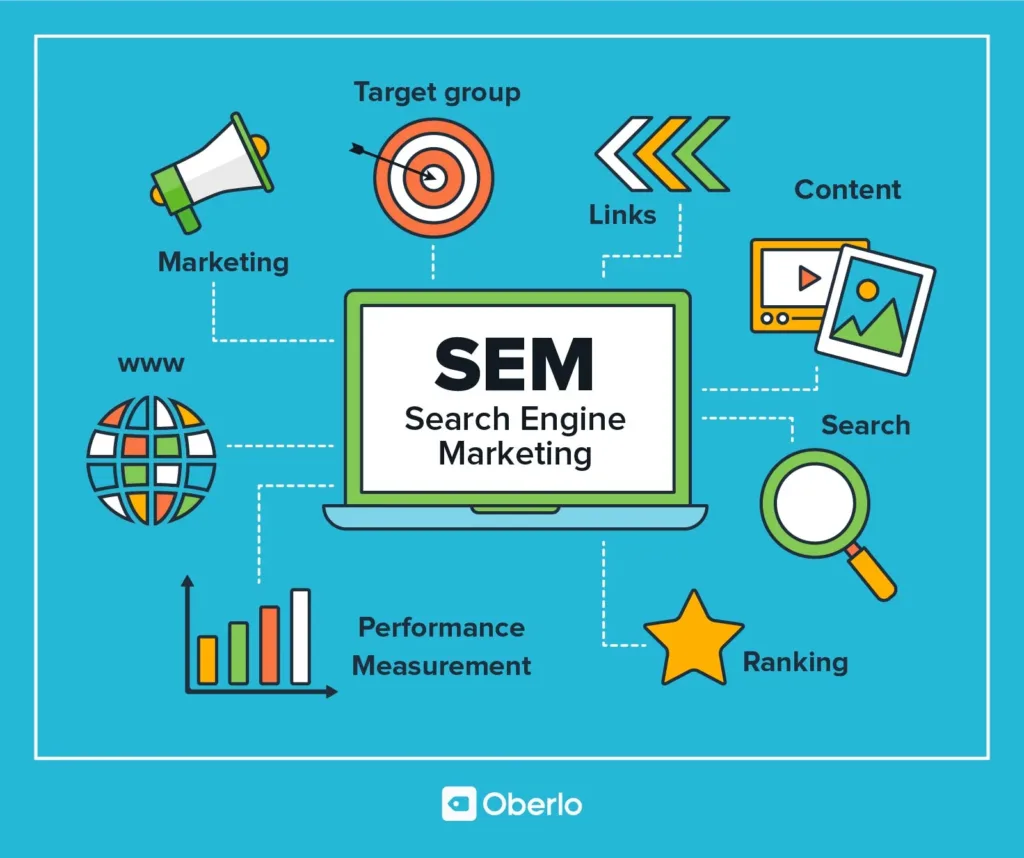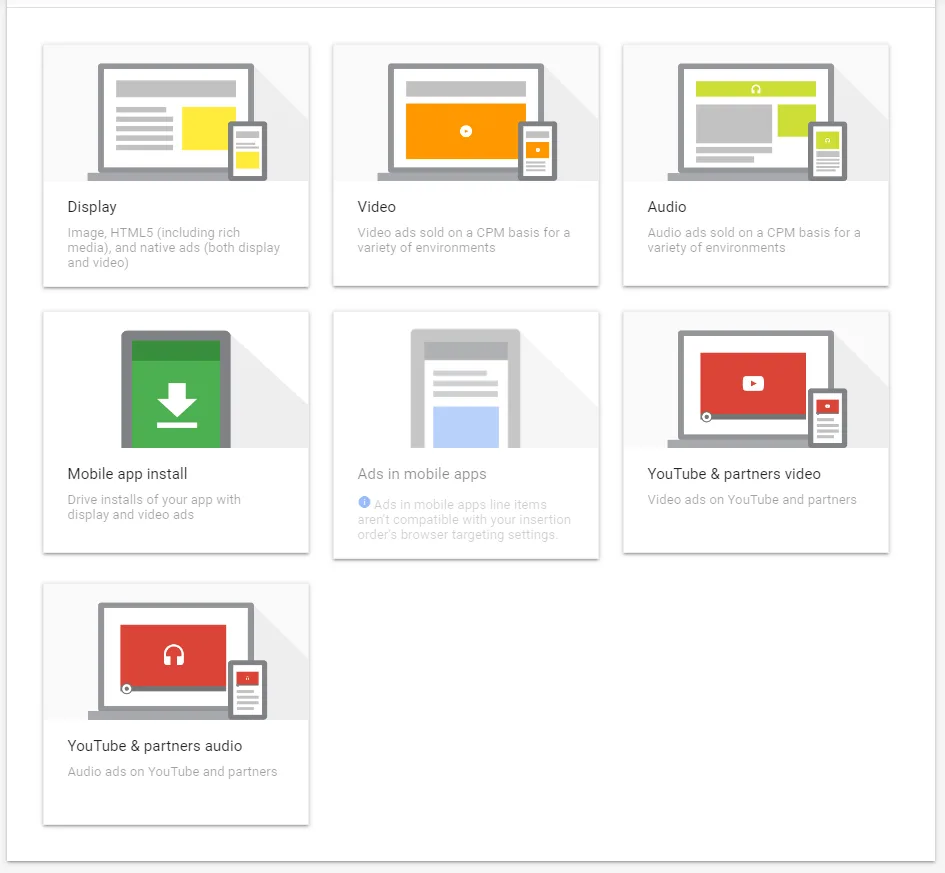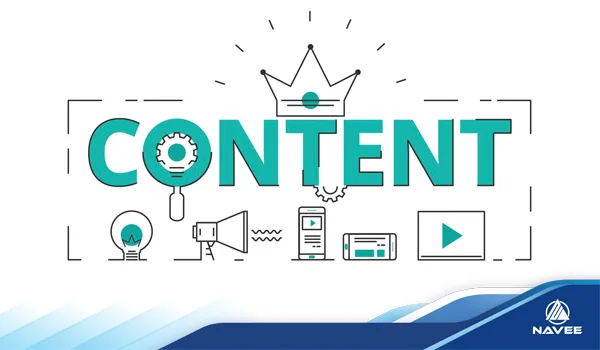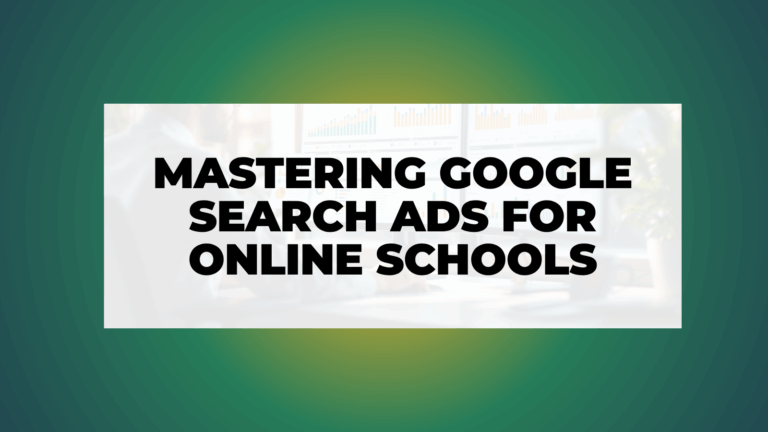The digital education landscape is more competitive than ever. Prospective students are bombarded with options, and generic ad campaigns no longer cut through the noise.
The difference between a thriving online institution and one that struggles to fill virtual seats often comes down to a single, crucial element: a clear, data-driven advertising/communication strategy. While many schools are still stuck broadcasting general messages, the leaders in the space are leveraging nuanced, multi-channel approaches to connect with the right students at the right time, with the right message.
This guide moves beyond surface-level advice. We will dissect the best ad strategy for online schools that we’ve found, breaking it down into seven specific, actionable blueprints that deliver measurable results right now. You will gain a clear understanding of how to implement each tactic effectively, transforming your marketing from a cost center into a powerful engine for growth.
We’ll cover a comprehensive toolkit designed for modern eLearning providers, including:
- Targeting high-intent leads with precise Search Engine Marketing.
- Building trust through Social Media Storytelling and student success stories.
- Reaching ideal prospects across the web with Programmatic Display Advertising.
- Leveraging authentic voices via Micro Influencers and Thought Leadership Partnerships.
- Nurturing interest into enrollment with clear Email Marketing Automation.
Forget the outdated playbook. In the following sections, you will discover how to stop wasting ad spend on ineffective campaigns and start building a predictable, scalable enrollment pipeline. These strategies are your roadmap to not just competing, but dominating your niche in the online education market.
1. Search Engine Marketing (SEM) with Education-Focused Keywords

Search Engine Marketing, or SEM, is a cornerstone of digital advertising for online schools. It involves placing paid ads on search engine results pages (SERPs) like Google and Bing. This strategy targets prospective students at the exact moment they are actively searching for educational opportunities, making it a powerful, intent-driven approach. By bidding on specific keywords related to degrees, courses, and career paths, you position your institution directly in front of a high-motivation audience.
Unlike passive advertising, SEM captures demand that already exists. When a working professional searches for “online MBA for project managers” or a recent graduate looks for “best online data science certificate,” your ad can provide the immediate answer. This direct-response mechanism is why SEM is often considered the best ad strategy for online schools focused on generating qualified leads and immediate enrollments.
Actionable Tips for Implementation
To maximize your SEM efforts, move beyond generic terms and adopt a more sophisticated approach.
- Segment Campaigns by Program: Create separate ad groups and campaigns for each degree level (bachelor’s, master’s, certificate) and specialization (nursing, business, IT). This allows you to write hyper-relevant ad copy and direct users to the most appropriate landing page.
- Track Lead Quality, Not Just Quantity: Implement robust conversion tracking to measure not just how many leads you get, but their quality. Track metrics like application starts, submitted applications, and ultimately, enrollments to optimize for true return on investment (ROI). For a deeper dive, explore this guide to refine your campaign tracking.
- A/B Test Landing Pages: The user’s journey doesn’t end with a click. Continuously test different landing page headlines, forms, and calls-to-action (CTAs) for various audience segments to improve your conversion rates.
2. Social Media Storytelling and Student Success Campaigns
While SEM targets active searchers, social media advertising captures audiences where they spend their free time, building brand affinity and inspiring future students. This strategy shifts the focus from direct sales pitches to authentic storytelling, leveraging student and graduate success stories to build trust and demonstrate real-world outcomes. It’s a content-driven approach that creates an emotional connection, showing prospective students what’s possible rather than just telling them.

This method moves beyond generic “Enroll Now” ads to feature relatable narratives of students balancing work, family, and education. By showcasing diverse journeys and tangible career advancements, you provide powerful social proof that resonates far more deeply than traditional promotional messaging. To truly connect with prospective students where they spend their time, it’s crucial to master the art of building success in social media advertising and learn how to build successful campaigns across various platforms.
Why This Strategy Is Essential
Storytelling is effective because it humanizes your institution and makes abstract degree outcomes concrete and relatable. It’s a key part of what makes this one of the best ad strategies for online schools aiming to build a strong, engaged community.
Actionable Tips for Implementation
To launch an effective storytelling campaign, you need a system for sourcing, producing, and distributing authentic content.
- Create a Student Ambassador Program: Partner with current students and recent graduates to be the face of your campaigns. Offer them incentives like tuition credits or stipends to share their experiences through testimonials, blog posts, and social media takeovers.
- Develop a Content Calendar: Plan your content mix to balance student stories with program information and application deadlines. A consistent schedule keeps your audience engaged and moves them through the consideration funnel.
- Invest in High-Quality Video: Authentic stories deserve professional production. Invest in high-quality video for student testimonials, as this format is highly engaging on platforms like Instagram, Facebook, and TikTok. Even smartphone footage can be effective if it’s well-lit and has clear audio.
- Launch a User-Generated Content (UGC) Hashtag: Encourage your entire student body to share their journey using a unique brand hashtag. Feature the best posts on your official channels to foster a sense of community and create a steady stream of authentic content.
- Use Platform-Specific Formats: Tailor your stories to each platform. Use Instagram Stories for behind-the-scenes content, create short, impactful TikTok videos, and post in-depth success stories as LinkedIn articles to reach working professionals. To learn more about optimizing these campaigns, review the 80/20 of running scalable Facebook and Instagram ads.
3. Programmatic Display Advertising with Behavioral Targeting

Programmatic display advertising is an automated approach that uses data and algorithms to serve visual ads to prospective students across the web. Instead of manually buying ad space on specific websites, this strategy targets individuals based on their online behavior, interests, and demographic data. It places your school’s banner ads on the websites, apps, and platforms your ideal students frequent, from career development blogs to niche forums.
This method moves beyond contextual placement to focus on audience-centric targeting. If a user has been researching “how to advance in a nursing career” or browsing articles about data analytics certifications, programmatic platforms like Google Display & Video 360 or The Trade Desk can identify them as a high-potential lead. Your ad for an online RN-to-BSN or data science program can then appear, creating brand awareness and driving consideration even when they aren’t actively searching.
Why This Strategy Is Essential
Programmatic advertising is essential for reaching potential students early in their decision-making journey and for large-scale brand building. While SEM captures existing demand, programmatic display helps create it. For instance, the University of Maryland Global Campus leverages programmatic platforms to target professionals on sites like LinkedIn, while Purdue University Global runs sophisticated retargeting campaigns across education-focused websites to re-engage visitors. This makes programmatic a top ad strategy for online schools looking to fill the top of their marketing funnel and stay top-of-mind.
Actionable Tips for Implementation
To get the most out of your programmatic budget, a highly segmented and creative approach is necessary.
- Create Audience Segments: Build distinct audience profiles based on career interests (e.g., aspiring project managers), life stages (e.g., working parents), and online behavior (e.g., users who have visited competitor sites).
- Develop Multiple Creative Variations: Combat ad fatigue by creating a library of ad creatives with different images, headlines, and calls-to-action. Test which combinations resonate best with each audience segment.
- Use Sequential Messaging: Guide prospects through the enrollment funnel with a story-based ad sequence. An initial ad might build brand awareness, a second could highlight a specific program benefit, and a third could offer a direct call-to-action like “Download a Program Guide.”
- Implement Frequency Capping: Avoid annoying potential students by limiting how many times a single user sees your ad within a specific period. This preserves brand perception and prevents wasted ad spend.
- Focus on High-Quality Publisher Networks: Ensure your ads appear in brand-safe environments. Work with your programmatic platform to curate a list of relevant, high-quality websites and apps, excluding those that don’t align with your institution’s brand.
4. Influencer and Thought Leadership Partnerships

Influencer and Thought Leadership Partnerships are a relationship-based advertising strategy that moves beyond traditional ads to leverage trust and authority. This approach involves collaborating with industry experts, career coaches, and educational influencers to authentically promote your online programs. By partnering with established voices, you tap into their credibility and reach a pre-built, engaged audience that values their recommendations.
Unlike direct advertising, this strategy builds social proof and frames your institution as a leader in a specific field. When a respected data scientist on LinkedIn discusses the value of your new AI certificate, or a popular nursing blogger reviews your RN-to-BSN program, the endorsement feels more like a trusted referral than a paid promotion. This authenticity makes it an incredibly effective ad strategy for online schools looking to build brand reputation and attract discerning students.
Why This Strategy Is Essential
This strategy is powerful because it builds trust, a critical factor in a student’s decision-making process. The modern educational landscape is crowded, and endorsements from credible figures cut through the noise. For instance, LinkedIn Learning partners with top business leaders to lend authority to its courses, while Coursera often features the university professors who teach the courses in its marketing, turning educators into thought leaders. This method allows you to connect with niche communities in a way that banner ads or search ads simply cannot, driving high-quality, motivated applicants.
Actionable Tips for Implementation
To successfully leverage influencers and thought leaders, your focus must be on genuine collaboration and mutual value, not just transactional posts.
- Prioritize Micro-Influencers: Instead of chasing celebrities with massive follower counts, partner with micro-influencers (5k-100k followers) who have highly engaged, niche audiences. A career coach specializing in tech transitions will have a more relevant following for your coding bootcamp than a general lifestyle influencer.
- Develop Long-Term Partnerships: One-off promotional posts can feel inauthentic. Build sustained relationships where the influencer becomes a true brand ambassador, featuring your school in multiple content formats over time, such as webinars, blog posts, and podcast interviews.
- Co-Create Valuable Content: Don’t just ask for a shoutout. Collaborate on content that serves the influencer’s audience. This could be a joint webinar on “Breaking into Cybersecurity” or a co-authored guide on “Advancing Your Career with a Project Management Certificate.”
- Establish Clear Brand Guidelines: Provide your partners with clear messaging guidelines, key value propositions, and information about accreditation, but allow them creative freedom to communicate in their own voice. Authenticity is paramount.
- Track Engagement and Lead Quality: Measure success beyond vanity metrics like likes and follower counts. Use unique tracking links or dedicated landing pages to monitor link clicks, application starts, and enrollments generated from each partnership to calculate true ROI.
5. Email Marketing Automation and Lead Nurturing

Email marketing automation is a systematic approach to converting prospective students by guiding them from initial interest to enrollment through personalized email sequences. This strategy moves beyond one-off email blasts, using behavioral triggers and segmentation to deliver relevant, timely content at each stage of the decision-making journey. It’s the engine that powers sustained engagement after a potential student first shows interest.
Unlike paid ads that require a constant budget to stay visible, lead nurturing builds a relationship with your audience over time, maximizing the value of every lead you generate. When a user downloads a program guide or signs up for a webinar, they enter an automated workflow designed to answer their questions, address their concerns, and keep your institution top-of-mind. This makes it a highly effective and cost-efficient ad strategy for online schools with longer consideration cycles.
Why This Strategy Is Essential
Email automation is critical because the path to enrollment is rarely linear; it’s a journey filled with questions and considerations. Pioneers like HubSpot popularized inbound marketing and automation, showing how educational content can build trust and drive conversions. In the education sector, platforms like Coursera excel by sending personalized course recommendation emails based on browsing history, while edX runs program-specific nurturing campaigns that guide degree seekers with detailed curriculum information and faculty introductions.
This targeted communication ensures that you are providing value, not just sending sales pitches. By understanding and addressing the barriers that prevent prospects from taking the next step, you can significantly increase conversion rates. Even with strong initial interest, it’s vital to understand why motivated students still don’t enroll and tailor your communications to overcome those specific hurdles.
Actionable Tips for Implementation
To build a powerful lead nurturing machine, focus on personalization, value, and data-driven optimization.
- Create Nurture Tracks by Program and Persona: Develop separate email sequences for different programs (e.g., MBA vs. B.S. in Nursing) and student personas (e.g., career changer vs. recent graduate). This ensures the content is highly relevant to each segment’s unique goals and pain points.
- Provide Value-Driven Educational Content: Your emails should do more than just promote your school. Share valuable content like career outlook guides, alumni success stories, articles on industry trends, or tips for balancing work and study. This positions you as a trusted advisor.
- Use Progressive Profiling: Instead of asking for all information upfront, use progressive profiling in your forms. Gradually collect more data about a lead with each interaction, allowing you to further personalize their journey without overwhelming them initially.
- Implement Lead Scoring: Assign points to leads based on their actions (e.g., opening an email, visiting the tuition page, downloading an application checklist). This helps you identify the most engaged, sales-ready prospects for your admissions team to prioritize.
- Continuously Test and Optimize: A/B test every element of your campaigns, including subject lines, send times, email frequency, and calls-to-action (CTAs). Use the data to refine your approach and improve open rates, click-through rates, and ultimately, enrollment rates.
6. Content Marketing and SEO-Driven Lead Generation

Content marketing and Search Engine Optimization (SEO) represent a long-term, sustainable approach to attracting prospective students. Instead of paying for every click, this strategy focuses on creating valuable, educational content that ranks organically in search engines. By answering the questions and addressing the pain points of your target audience, you build trust, establish your institution as a thought leader, and generate a steady stream of qualified leads.
This method moves beyond direct advertising to create assets that appreciate over time. When a prospective student searches for “is a cybersecurity degree worth it?” or “how to become a nurse practitioner,” your in-depth blog post or guide can provide the answer. This builds an authentic connection long before they are ready to apply, making it a powerful foundation for your overall marketing efforts.
Why This Strategy Is Essential
Content marketing is crucial because it aligns perfectly with the research-heavy journey of a prospective student. Pioneers in this space, such as Brian Dean and Ann Handley, have shown how strategic content can dominate search rankings and build brand authority. For online schools, this translates into tangible results. Penn Foster’s career resource center provides detailed guides for specific industries, while Southern New Hampshire University’s blog offers articles on career advancement, effectively capturing an audience focused on professional development.
Similarly, Western Governors University produces thought leadership content around competency-based education, attracting students who are a perfect fit for its unique model. This strategic content creation is arguably the best ad strategy for online schools aiming to build a durable, cost-effective lead generation engine that doesn’t rely solely on paid media.
Actionable Tips for Implementation
To build an effective content and SEO machine, you need a systematic approach that aligns with student intent.
- Focus on Long-Tail Keywords: Target specific, question-based keywords like “how long does it take to get an online MBA while working” instead of broad terms. These phrases attract a more qualified audience and are easier to rank for.
- Create Content for Each Stage of the Journey: Develop content for the awareness (e.g., “benefits of a business degree”), consideration (e.g., “online BBA vs. on-campus BBA”), and decision (e.g., “WGU vs. SNHU reviews”) stages of the student lifecycle.
- Develop Pillar Content and Topic Clusters: Build comprehensive “pillar” pages for your core programs, like an “Ultimate Guide to Online Nursing Degrees.” Surround these pillars with “cluster” content, such as blog posts on “types of nursing specializations” or “day in the life of an RN,” that all link back to the main pillar page.
- Use Internal Linking Strategically: Guide visitors from your informational blog posts to high-intent program and admissions pages. A well-placed internal link in an article about project management careers can seamlessly direct readers to your Project Management degree page.
- Regularly Update and Refresh Content: SEO is not a “set it and forget it” activity. Periodically update your most important content with new information, statistics, and examples to maintain and improve its search rankings.
7. Retargeting and Conversion Optimization Campaigns

Retargeting is a high-performance advertising strategy that focuses on re-engaging website visitors who have already shown interest in your online school but left without converting. This approach uses targeted ads to follow these prospective students across the web, reminding them of the programs they viewed and encouraging them to return and complete the application process. It is a powerful method for maximizing the value of your initial ad spend by converting warm leads who are already familiar with your brand.
This strategy works by placing a small, unobtrusive piece of code (a pixel) on your website. When a user visits a key page, like a degree program description or an application form, the pixel drops an anonymous browser cookie. Later, when that user browses other websites, your retargeting platform knows to serve them your ads, creating a personalized and timely reminder to reconsider your institution.
Why This Strategy Is Essential
Retargeting is a critical component of the best ad strategy for online schools because the consideration period for higher education is often long and complex. Few prospective students enroll on their first visit. Institutions like the University of Phoenix use comprehensive retargeting funnels to serve different ads based on program categories, while Capella University runs highly effective abandoned application recovery campaigns. Similarly, SNHU excels with dynamic retargeting that showcases the specific degree programs a user previously viewed, making the ads feel personal and highly relevant.
This approach prevents potential students from falling through the cracks, keeping your institution top-of-mind as they compare options. By focusing on an audience that has already demonstrated interest, retargeting campaigns typically yield a much higher return on ad spend (ROAS) and lower cost-per-acquisition compared to prospecting campaigns targeting cold audiences.
Actionable Tips for Implementation
To build an effective retargeting engine, you need to go beyond simply showing the same ad to every past visitor.
- Segment Audiences by Intent: Create different retargeting lists based on user behavior. For example, segment users who visited a program page, users who started an application, and users who downloaded a brochure. Each audience has a different level of intent and requires a unique message.
- Develop Acknowledgment-Based Creative: Design ad copy and visuals that acknowledge the visitor’s previous interest. Use messaging like, “Still considering your MBA?” or “Ready to finish your application for our nursing program?” to create a direct and personal connection.
- Use Sequential Messaging: Don’t show the same ad repeatedly. Develop a sequence of ads that guides the user through the conversion funnel. The first ad might be a simple reminder, the next could address common concerns (like financial aid), and a final ad might offer help from an admissions advisor.
- Implement Advanced Conversion Tracking: To truly optimize, you must track what happens after the click. Proper conversion tracking allows you to see which ads are driving not just form fills, but actual enrollments. You can discover how we tripled conversions using advanced conversion tracking and apply similar principles.
- Test Different Offers and Incentives: For audiences that are hard to convert, experiment with specific offers. This could include an application fee waiver, an invitation to an exclusive webinar with faculty, or a downloadable guide comparing career outcomes for a specific degree.
Top 7 Online School Ad Strategies Comparison
| Strategy | Implementation Complexity | Resource Requirements | Expected Outcomes | Ideal Use Cases | Key Advantages |
|---|---|---|---|---|---|
| Search Engine Marketing (SEM) with Education-Focused Keywords | Moderate | Paid ads budget, keyword research, campaign management | Immediate visibility and high intent traffic | Recruiting active searchers for education programs | Measurable ROI, flexible budget, direct competition with universities |
| Social Media Storytelling and Student Success Campaigns | High | Content creation, community management, video production | Builds trust and emotional connection | Brand building, awareness, engagement | High engagement, cost-effective user-generated content, authentic social proof |
| Programmatic Display Advertising with Behavioral Targeting | High | Data analytics, creative production, platform management | Broad reach with targeted audience | Retargeting and audience expansion | Automated optimization, cross-device targeting, cost-effective reach |
| Influencer and Thought Leadership Partnerships | Moderate to High | Partner relationship management, content collaboration | Authentic third-party validation | Brand credibility, audience trust building | Leverages trust, reaches niche engaged audiences, valuable educational content |
| Email Marketing Automation and Lead Nurturing | Moderate | Marketing automation tools, content creation, segmentation | Improved conversion with personalized nurturing | Long decision-cycle lead nurturing | Scalable automation, high personalization, cost-effective ROI |
| Content Marketing and SEO-Driven Lead Generation | Moderate | Continuous content creation, SEO expertise | Long-term organic traffic and brand authority | Educational resource hubs, organic lead gen | Builds authority, cost-effective over time, attracts qualified prospects |
| Retargeting and Conversion Optimization Campaigns | High | Creative development, analytics setup | Higher conversions from warm traffic | Maximizing existing traffic, conversion rate improvement | Cost-effective, targeted messaging, shorter sales cycles |
Building Your Integrated Ad Strategy for Sustainable Growth
Navigating the competitive landscape of online education requires more than just a single, isolated advertising campaign. As we’ve explored, the search for a singular “best ad strategy for online schools” is often misguided. True, sustainable growth emerges not from finding one magic bullet, but from skillfully weaving multiple high-impact strategies into a cohesive and responsive marketing ecosystem. The most successful online schools understand this fundamental principle: integration is the key to unlocking exponential results.
Think of each strategy we’ve discussed as a vital component in a larger machine. Your SEM campaigns act as the front line, capturing high-intent prospects actively searching for programs like yours. Simultaneously, your social media storytelling builds an emotional connection, showcasing student successes and fostering a community that prospective students want to join. This combination of capturing intent and building trust is incredibly powerful.
From Individual Tactics to an Integrated System
The real challenge, and where most schools falter, is in making these disparate channels work together. A potential student might first discover your school through an influencer partnership, later see a programmatic display ad based on their browsing behavior, and finally convert after receiving a targeted email from your lead nurturing sequence. Without a unified system, this journey is disjointed and ineffective.
To make this integration successful, you must focus on the connective tissue:
- Consistent Messaging: Your value proposition, tone of voice, and core messaging must remain consistent across all platforms, from a Google Ad headline to an Instagram Story.
- Seamless Data Flow: Ensure your analytics and CRM systems talk to each other. This allows you to track a user’s entire journey, attribute conversions accurately, and make informed decisions about where to allocate your budget.
- Strategic Retargeting: Use insights from one channel to inform another. For example, segment users who engaged with specific course content on your website and retarget them with ads highlighting testimonials from graduates of that exact program.
This level of coordination turns your marketing from a series of disjointed bets into a predictable engine for enrollment.
Ready to transform your scattered ad campaigns into a predictable enrollment machine? At nn.partners, we specialize in implementing the integrated systems discussed here, helping online schools clarify their data, structure their ad accounts for scale, and drive sustainable growth. Schedule a consultation with nn.partners to build a marketing foundation that delivers results.



